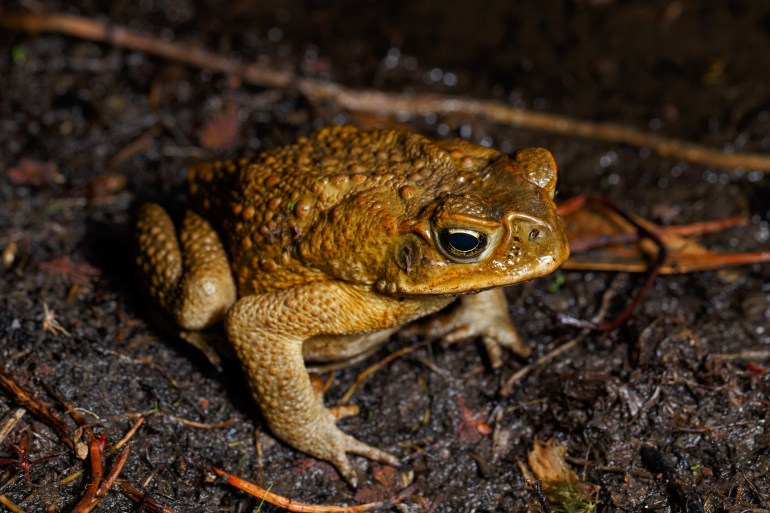The report by the Intergovernmental Platform on Biodiversity and Ecosystem Services (IPBES), warned that the increase of invasive alien species and their negative impacts are likely to grow in the coming years and pose a serious threat to ecosystems, food security and livelihoods around the world.
The team of 86 researchers from 49 countries released a four-year assessment of the global impacts of invasive species, finding that economic costs now total at least $423bn every year, with the alien invaders playing a key role in 60 percent of recorded plant and animal extinctions.
Here’s what you need to know about invasive species:
What is an invasive species?
Invasive species are animals, fish and plants that cause heavy damage to crops, wildlife and human health worldwide. Some prey on native species, while others out-compete them for space and food or spread disease.
When a species that is not native to a particular area becomes established there, reproducing quickly and causing harm, it has become invasive.
From water hyacinth choking Lake Victoria in East Africa, to rats and brown snakes wiping out bird species in the Pacific, to mosquitoes exposing new regions to Zika, yellow fever, dengue and other diseases, tens of thousands of alien species have taken root far from their place of origin.
Does the idea of #InvasiveAlienSpecies have you confused?🤔@IPBES just launched a major Report on this global threat to nature & people.
Please help us by sharing this short animation to help understand the process of biological invasions.
More: https://t.co/Id0Y850D1a pic.twitter.com/L4Hv6VArAR
— ipbes (@IPBES) September 7, 2023
How do invasive species spread?
Humans regularly move animals, plants and other living species from their home areas to new locations, either accidentally or on purpose, either by importing plants from faraway locations to raise as crops or bringing in a nonnative animal to prey on a local pest. Others hitch rides in cargo or ships’ ballast water.
According to the report, increasing levels of global trade and human travel is facilitating intentional and unintentional movement of species beyond their indigenous range, and threatening natural habitats and native species around the world.

Where are most invasive species found?
According to UN-backed the report, 34 percent of the effects of biological invasions were reported from the Americas, 31 percent from Europe and Central Asia, 25 percent from Asia and the Pacific, and about 7 percent from Africa.
Invasive alien species were most damaging on islands, with the numbers of alien plants now exceeding the number of native plants on more than 25 percent of all islands.
What are some examples of invasive species?
Zebra and quagga mussels: Zebra and quagga mussels invaded the Great Lakes in the US in the 1980s, clogging water intake pipes and out-competing native mollusks for food. Now, they are spreading west via rivers, lakes and bays, threatening waters all the way to the coast of the Pacific and Alaska.
Cane toad: Australia has been battling for years to rid itself of the invasive cane toad. Native to South and Central America, the creature was first introduced into the state of Queensland in 1935 to control beetles that were destroying lucrative sugarcane crops. It soon escaped into the wild and has expanded its territory across the northern coast and into the west.
Lionfish: Lionfish thrive in many ocean habitats, from coastal mangrove forests to deepwater reefs, and they prey on numerous smaller fish species. In the Caribbean, they have reduced the number of small juvenile fish on reefs by up to 80 percent within as little as five weeks.
Hyacinth: The hyacinth which once covered 90 percent of Lake Victoria in Africa – crippling transport and fishing, smothering aquatic life, blocking hydroelectric dam intake, and breeding mosquitoes – is thought to have been introduced by Belgian colonial officials in Rwanda as an ornamental garden flower before making its way down the Kagera River in the 1980s.
Asian long-horned beetle: The pesky bug, native to China, Japan and Korea is believed to have been introduced to North America and Europe in wooden packing materials. They lay eggs in trees and eat their barks, making it difficult for nutrients to reach other parts of the tree.

How can we help fight against invasive species?
Public awareness is critical for stemming the spread of many invasive plants and animals. Some ways to do this are:
Cleaning your shoes and socks after a hike.
Using native bait while fishing.
Reporting the presence of invasive species.
Using local firewood as the simple act of moving firewood can transfer critters.
